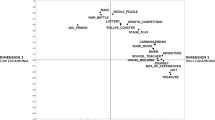Abstract
Metaphor is a way of seeing. Are we among those who pass along the way--clapping and hissing and pointing the finger of blame and shame? Perspectives or “windows” on the person “opened” or “created” varies by certain theological commitments of pastors active in ministry, and the pastoral counselor. Windows (or perspectives, and limitations) are among the important metaphors in this essay. Metaphor is the key term. Views of our fundamental human nature are described by way of metaphor. If beauty is in the eye of the beholder, and if one cannot step into the same flow of water twice, because it changes and we change, then it can mean many different things. Beauty, as metaphor, is emotional and transient and cannot be objectively measured. What is beauty to one person may not be to another. A subjective use of metaphor is intended. Therefore, I shall argue that beauty is in the eye and emotions and experiences of the beholder. This essay makes use of metaphor as a way to talk about beauty, emotions, change, the natural environment, and our fundamental human nature. Pictures or selected photos are employed. Metaphor (and paying attention to small detail are) important parts of gathering information in pastoral care. Certain questions are raised about our fundamental human nature. Pastors, active in ministry, ought to be interested in the many metaphors used to describe change in human emotions and relations, behavior and nature.
Similar content being viewed by others
Notes
The 8 windowpanes and hard-to- see borders are intended as metaphors for multiple views and limitations about our fundamental human nature. I assume that where we stand, perspectives and commitments matter, and are hard to see or acknowledge, yet they influence what we see.
Anthropodicy is the attempt to explain evil and suffering as the result of human actions (vs. theodicy, which argues for a perfect and omnipresent God in an imperfect world).
Sampson (1981) provided a helpful definition of cognitive psychology:
By cognitive psychology, I refer to that broad and diverse range of psychological approaches which emphasize the structures and processes within the individual's mind that are said to play the major role in behavior: a psychology of the subject rather than of the object. The cognitivist tradition is usually contrasted with the objectivist tradition of British empiricism, which has also influenced the contemporary forms of psychology but which emphasizes the properties of the object more than those of the subject . . . . Cognitive psychology recognizes a disparity between what is “out there” and its internal representation and argues that behavior is a function of the subjective world as transformed and represented internally. People respond to how they define stimulus situations, not to the objective properties of those stimulus situations. (p. 730)
Reference
Sampson, E. E. (1981). Cognitive psychology as ideology, clark university. American Psychological Association, 36(7), 730–743.
Author information
Authors and Affiliations
Additional information
Publisher’s Note
Springer Nature remains neutral with regard to jurisdictional claims in published maps and institutional affiliations.




